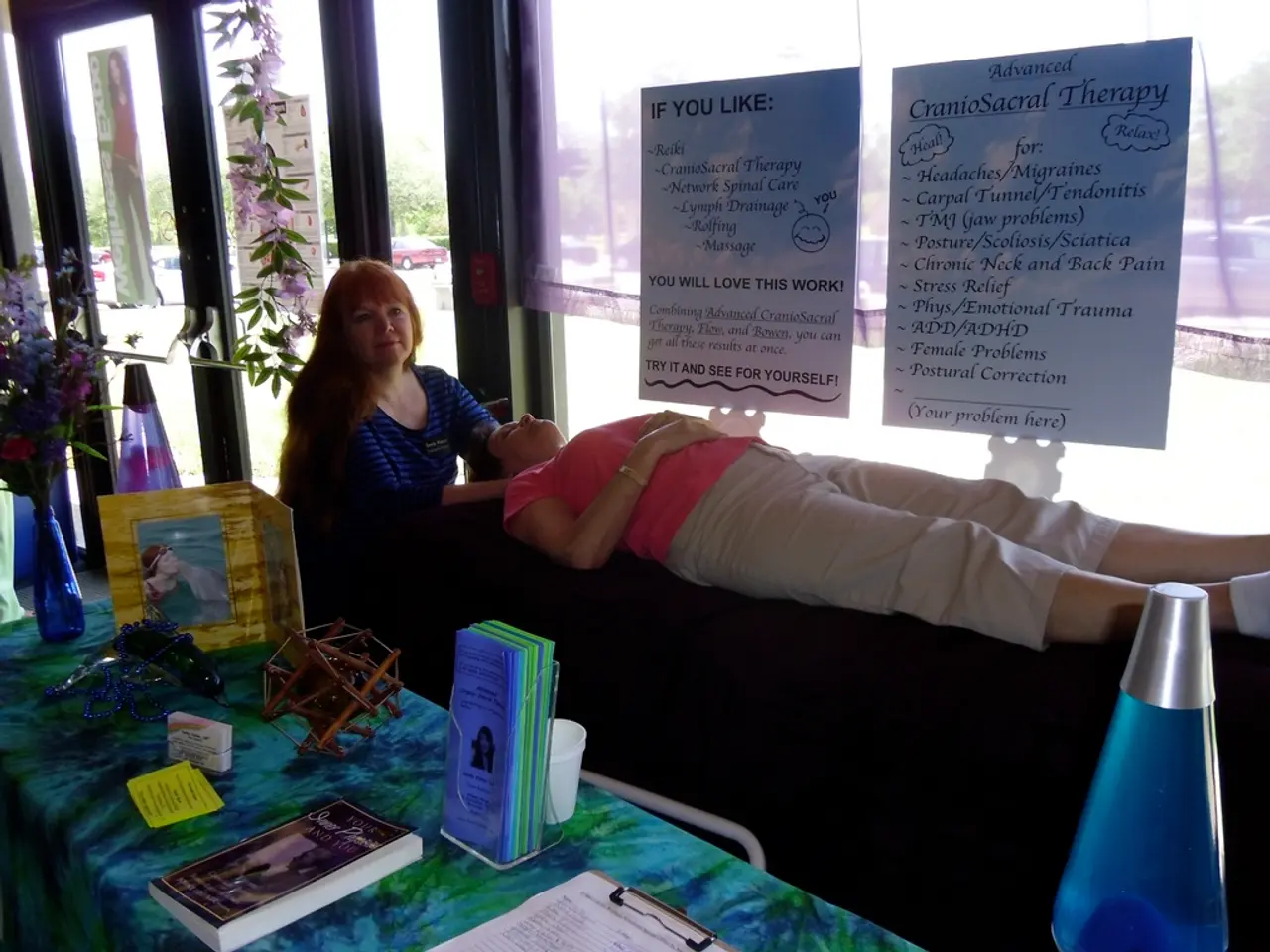Exploring Back Pain Relief sans Surgery: 11 Unconventional Therapies
Chronic back pain affects millions of individuals worldwide, causing discomfort and limiting daily activities. However, recent research has identified a range of evidence-based, non-surgical treatments that can help manage this condition effectively.
One of the key interventions is physical therapy, which involves a structured programme of exercises to improve flexibility, strengthen core and support muscles, and educate on posture and body mechanics to reduce strain on the back. Physical therapists also use modalities like heat, ice, ultrasound, and electrical stimulation such as Transcutaneous Electrical Nerve Stimulation (TENS) to relieve pain and inflammation. Manual therapies such as joint mobilization and massage complement exercise programmes.
Spinal manipulation, often provided by chiropractors or physical therapists, can offer symptom relief by improving joint mobility and reducing muscle tension. Acupuncture, recognised as a complementary therapy, may reduce chronic pain by stimulating nerves and altering pain signalling pathways.
Weight loss and adopting an anti-inflammatory diet can also contribute to managing chronic back pain. Excess weight contributes to mechanical stress on the spine, and weight loss programmes can reduce this burden. An anti-inflammatory diet may help by lowering systemic inflammation that can exacerbate pain, although specific guidelines and strong evidence on diet alone remain emerging.
Correcting posture and learning proper ergonomic body mechanics is essential in preventing and managing back pain. Wearing the right footwear can influence posture and alignment, potentially alleviating strain on the lower back in some individuals.
Regular physical activity tailored to the individual's condition improves mobility, enhances muscle support of the spine, and promotes overall health. Exercise reduces deconditioning and is a primary strategy in chronic back pain management.
Stress management techniques, such as cognitive-behavioral therapy (CBT) and mindfulness-based stress reduction, have strong evidence for improving quality of life and reducing pain perception in chronic low back pain. These therapies also help reduce reliance on opioids for pain management.
While not extensively covered in the evidence, CBD oil may provide additional support in managing chronic back pain. Current evidence for cannabidiol (CBD) oil in chronic back pain is limited and not yet strongly supported by large-scale clinical trials or guidelines. More rigorous research is needed before it can be recommended as a standard treatment.
The World Health Organization’s recent 2023 guideline on nonsurgical management of chronic primary low back pain emphasises a conservative, evidence-based, and patient-centered approach combining physical therapy, behavioural therapies, and medication as appropriate, with surgery reserved for specific cases.
In summary, a multimodal approach incorporating physical therapy with exercise and manual therapy, spinal manipulation, acupuncture, stress management (CBT, mindfulness), posture correction, weight loss, and TENS have strong or moderate evidence to support their use in managing chronic back pain. CBD oil remains experimental and requires further study. Proper footwear and anti-inflammatory diet may provide additional support but should be part of a comprehensive plan tailored by healthcare professionals.
If a person experiences back pain accompanied by other symptoms such as fever, numbness, foot drop, or if it occurs after an accident, they should seek medical advice promptly.
- Acupuncture, recognized as a complementary therapy, may reduce chronic back pain by stimulating nerves and altering pain signaling pathways.
- Chiropractic's spinal manipulation can offer symptom relief by improving joint mobility and reducing muscle tension.
- CBD oil may provide additional support in managing chronic back pain, although current evidence for its use is limited and requires further study.
- Adopting an anti-inflammatory diet can help manage chronic back pain by lowering systemic inflammation that can exacerbate pain.
- Fitness-and-exercise, such as regular physical activity tailored to the individual's condition, improves mobility, enhances muscle support of the spine, and promotes overall health in managing chronic back pain.




